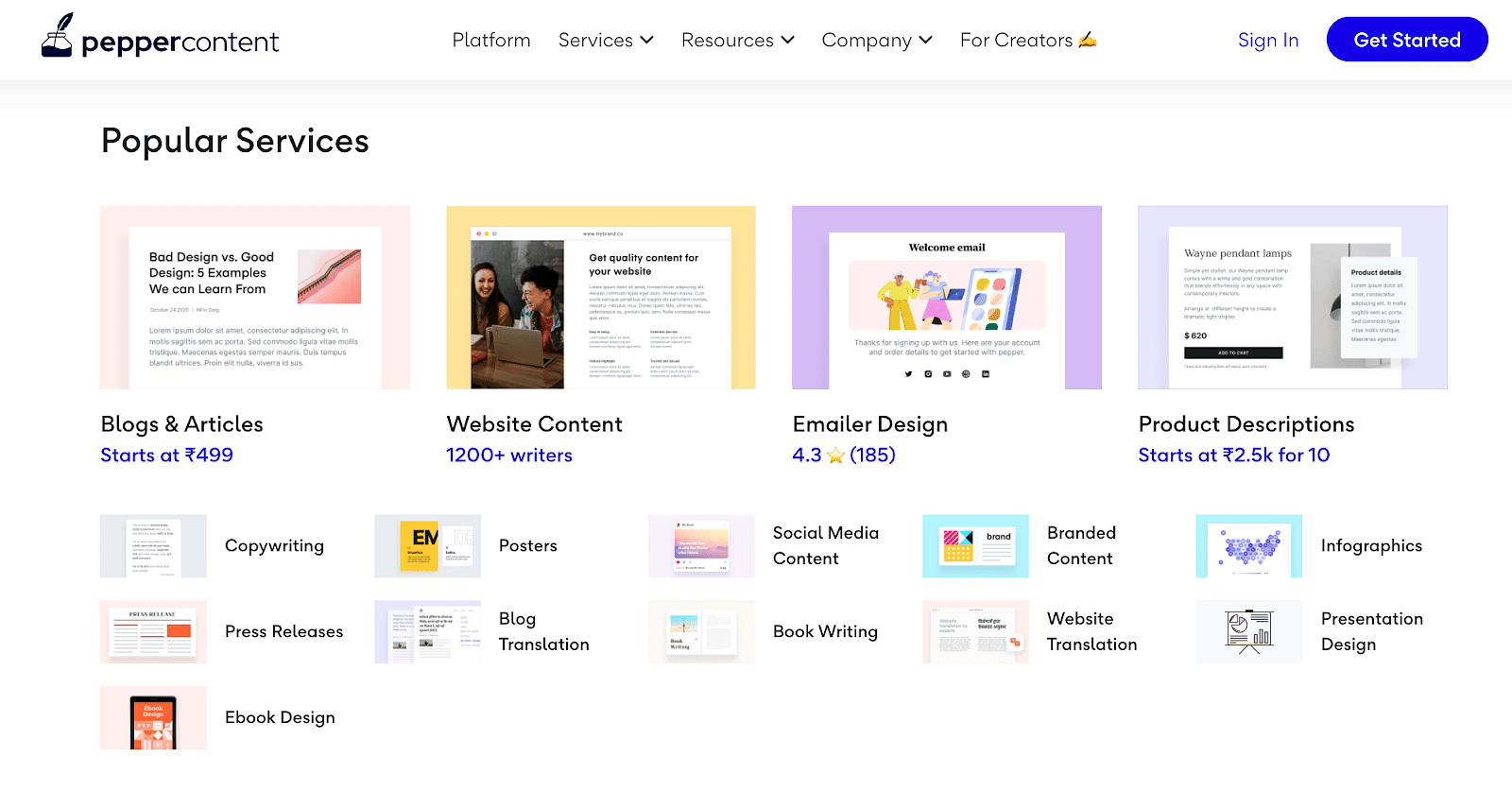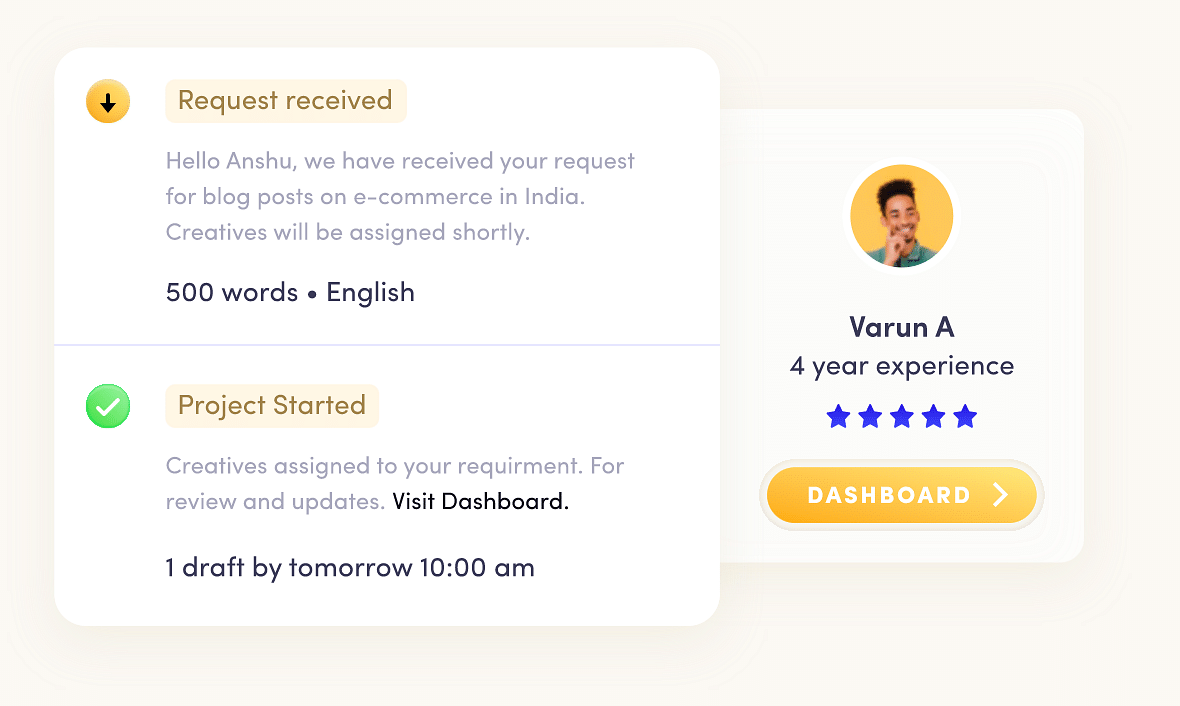
Pepper Content: How this India-based company sprinkles flavour on content and helps businesses get noticed
By Jim James, Founder EASTWEST PR and Host of The UnNoticed Entrepreneur.
In the new episode of The UnNoticed Entrepreneur, I had Dhriti Goyal joining me all the way from India. She talked about how Pepper Content — where she’s the Product Marketing Manager — helps entrepreneurs get noticed.
Pepper Content aids businesses in democratising content. Content creation is a part of the whole task of running a business. It’s required but most of the time, with bandwidth crunch and having a lean marketing team, content creation becomes a little difficult and tricky. This is where they’re helping.
Basically, they enable creators and businesses to help each other to create content. With the help of their technology, it’s more like getting them together and offering them a one-stop destination for content creation.
Why Outsource Content Creation from Pepper Content
The good part about Pepper Content is that you can get any sort of content done. Be it any written content, any design, or any translation project. They’re also coming up with video projects. Any infographic that you want to get created, you can get it written, designed, and translated into different languages by their content creators.
Screengrab from Pepper Content
Established international platforms like Upwork and Fiverr have a good pool of creators and it’s up to you to choose. However, there is no standardisation of the quality or the kind of service that they provide. With Pepper Content, creators are rated and are given a series of tests. Based on your requirement, they assign a creator to the project. Dhriti said that this is how they make sure that you get the quality of the content and the right creator for you.
As I experienced on Upwork, you put out a bid and you check what the creators have done before, but you won’t necessarily get a standard metric.
There are two models in which Pepper Content is working right now. One is a self-serve model wherein you can simply sign up and do it on a per-requirement basis. The other is enterprise. If you have a bulk project, then they will assign an account manager to you. The billing also happens once — either on a monthly or quarterly basis, depending on the contract.
Ensuring Domain Expertise
One of the main challenges for people looking for writers is determining if they know the subject matter already.
To overcome this issue, Dhrite said that whenever they onboard a creator, they give a series of tests. In those tests, they evaluate them on the basis of different parameters. These include grammar and style of writing. Industry or domain expertise is also one of the aspects that they evaluate them on. When they get onboarded, their industry expertise is assigned to them so that they’ll fit the requirement.
For now, the majority of their creators are from India. But they’re also looking for creators from all over the world as they’re expanding their operations in the US and in other Asia Pacific countries. The primary language of their content is in English and they also translate into different languages.
Pepper Content has a network of 60,000+ creators in different fields. Talking about data, Dhriti said that they’ve already solved more than a hundred industry verticals. This shows that they have creators from almost all industries.
They also have their own Artificial Intelligence (AI) content writing assistant tool called Peppertype. This is being used all over the globe, not just in India. And most of its users are creators, writers, and even content managers. This tool, which is based on GPT-3, will help you write for your specific case. So if you’re writing for an Amazon product description, it will give you different content. If you’re writing for social media posts, it will give you another piece of content.
Image from Unsplash
How to Use Their Platform for Content Creation
To use their services, you have to sign up on a Pepper Content account. Once you sign up, you can create a project.
There’s a structured or a guided brief process or flow where you can add your requirements. It asks the smallest of details that are required in a brief (e.g. tone of voice, the structure of the article). Once you submit that, you’ll be given a schedule telling how many days it will take for them to finish the project. If you choose the self-serve model, you’ll also be given the day when you have to make the payment. In the case of the enterprise model, you can do the payment at a later date.
Once the project comes to Pepper Content, their AI-powered recommender engine will see which creators are available and are fit for the assignment. Then, it will get assigned to the particular creator and the project will be given to them. They will then write it, design it, and submit it.
There’s also a layer of quality check. They have editors who check the content. They also have their own curated content audit system, which is AI-powered. It checks the readability, grammar, and language correctness among others. Then, the project will go for submission for you, the client.
You will be notified and you can approve it, reject it, or send it for revoke. Pepper Content allows up to two or three free revokes. If in case you didn’t like it at all, the project will be rejected and will be assigned to a different creator. Then, the process will start again.
If there’s a bulk assignment – for example, you have a hundred blogs that need to be done in 10 days — then you will be the one to give the deadline (i.e. in how many days do you need the assignment submitted?). They will next give the project to a different set of creators. This is how you can say that with Pepper Content, you’ll never miss a deadline.
How Pepper Creators Get Chosen for a Project
The creators don’t have to bid to get assigned to a project. Dhriti mentioned that it’s on the basis of priority. For instance, this is the preferred writer as per their recommender engine. If the writer doesn’t accept it (they may have something else to do or they don’t want to do it), then they will go to the next recommended writer, and so on. This is purely based on their own profile.
In Upwork or Fiverr, creators bid and have different prices. It can be per hour or per project, which is a fixed cost. When it comes to Pepper, the pricing is quite standard.
When the creator gets onboarded, there’s pricing discussed or finalised with them. While creating the project, they also ask clients the level of the creator that they’re looking for. Are they looking for someone on the basic level or someone experienced? Based on that, the project will be assigned to a creator; the pricing is determined according to the creator’s level of expertise.
If you do a project with Pepper Content, you can start at around $20. Just like what companies face whenever they hire a freelancer, there’s a minimum amount of money and words. With their company, you can start with the smallest of the amount. You also don’t have to have that contract or something with them before they start the project.
Dhriti highly suggested that you check out their platform yourself and see that it’s affordable for any sort of business or individual.
Content Trends
Dhriti revealed that most people come to Pepper Content for blogs, which are mostly search engine optimisation (SEO) blogs. They’re getting orders of a hundred blogs that have to be completed in 10 or 15 days. They’ve done such scale for brands that are not just in the business-to-consumer (B2C) space but even in business-to-business (B2B).
Image from Unsplash
A lot of the content requirements that they take on are website content. They also have projects about designing eBooks or white papers. And they have companies who are coming for translation into different languages.
One of the things that she found interesting is that a lot of new-age technology companies are coming to them for content. And the primary reason is that the things that they’re building are very new. It’s why they need more content to be created and pushed out so that people become aware. They want not experts to write it, but general writers. Because if these writers are able to understand and write it, then it will be easy for their content to be consumed by others.
These are some of the things that she found while studying data from the audits that they’re getting. And, for her, it’s really interesting to see how people are trying content in different ways.
On AI Writing
Peppertype, their AI writing assistant, is a really interesting tool that can be used by individuals — even by social managers who need small captions and all that.
There are instances when a passion project comes into the picture. It’s something that’s very close to the company; something that everyone is looking forward to. Then there are those regular projects wherein you just have to send an email or produce some infographic. You’ll always stumble upon both of these things. The question is: How should you go about it?
For Dhriti, there are a few things that can be taken care of by Peppertype— those that need little refinement or tweaks. But sometimes, you need to go at scale and also take care of the quality. This is when you need that human intervention. A mix of both is always a good combination.
Talking about passion projects, she shared that these are projects that you sometimes want to keep with you. But as their company is trying to help businesses stay lean, they extend their creative squad team to you. You can even have your favourite freelancers working on your passion project and serve as your extended arm (Pepper Content allows enterprise clients to use the same content creator again. Whoever they’re liking, whoever they see whose writing is something that resonates with them, they can favourite them. Whenever your next project comes, it will go to that particular creator).
Then, she reiterated that a mix of AI and humans is required to scale your content with automation. It’s really about augmentation rather than replacement.
Pepper Content’s Portal Experience
An assignment will get submitted on Pepper Content’s platform. They have a so-called Pepper Editor, which is their own writing tool integrated on their platform.
Before they only had integration with Google Docs, then they switched to their own editor. The reason is to get a certain kind of liberty in terms of versioning (Keep in mind that there’s a writer who writes the content, there’s an editor who puts comments, then there’s also the final client). In their company, there’s also not only one person who’s going to approve the content. There are a bunch of people — including people from branding and product teams who will look at the content from their perspective.
So the versioning — the comments and what has changed — is better in Pepper Editor.
On their portal, the creator and the client can also see the project brief on the side. They also have a video brief component. A person who’s giving the brief can record a video; the creator can also access that on the side. This makes the whole information exchange easy.
I myself use video a lot (with Loom and Screencast-O-Matic). And I can say that these explanations done by video save a lot of time and misunderstandings.
Screengrab from Pepper Content
On their platform, you can also see the stage of the project (Is it approved? Is it under “writing” or “editing” status?) in real-time.
With a platform like Pepper Content, you can create content of all forms at a very low cost — very flexibly and with guaranteed quality. To find out more about them, visit www.peppercontent.io. You can also reach out to Dhriti at dhriti.goyal@peppercontent.in or on LinkedIn.
This article is based on a transcript from my podcast The UnNoticed Entrepreneur, you can listen here.
Cover image by Jess Bailey Designs on Pexels





